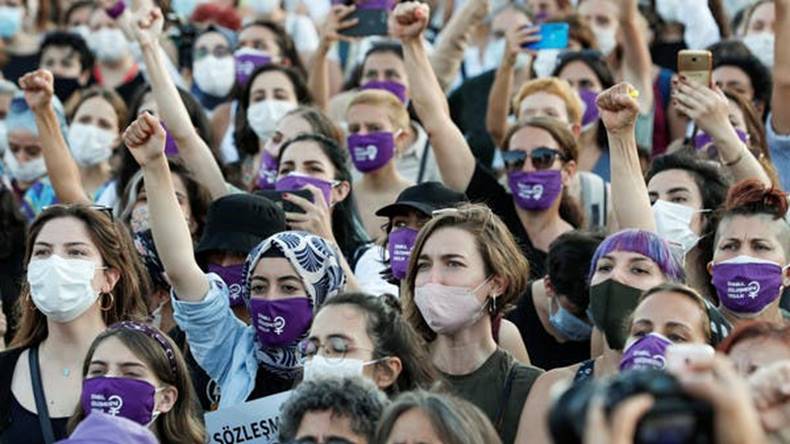Femicide: Understanding The Rise In Incidents

Table of Contents
Defining and Understanding the Scope of Femicide
Femicide is distinct from other forms of homicide; it’s characterized by the gender of the victim. It’s the intentional killing of women because of their gender. This can manifest in various horrifying ways, including:
- Intimate partner femicide: The killing of a woman by her current or former partner, often rooted in controlling behavior and domestic abuse. This is unfortunately a very prevalent form of femicide globally.
- Honor killings: The murder of a woman perceived to have brought shame or dishonor upon her family or community. These acts are often rooted in deeply ingrained patriarchal traditions and beliefs.
- Femicide linked to conflict: Women are disproportionately affected by conflict, often becoming victims of sexual violence and targeted killings during wartime or civil unrest. This includes cases of war crimes and crimes against humanity.
- Femicide related to other forms of gender-based violence: Many cases of femicide are preceded by stalking, domestic abuse, sexual assault, or other forms of harassment and violence. Understanding these links is crucial to preventing future femicide.
Accurately measuring the scope of femicide presents significant challenges. Underreporting is a pervasive problem, due to:
- Fear of retaliation from perpetrators or their associates.
- Lack of trust in law enforcement agencies, particularly in regions with weak rule of law.
- Social stigma and pressure to remain silent.
- Inadequate data collection and reporting systems.
Accurate data collection is paramount to developing effective prevention strategies. Without reliable statistics, the true extent of this global crisis remains hidden, hindering efforts to address it effectively.
The Root Causes of Femicide: Unpacking Complex Societal Issues
Femicide is not simply an isolated act of violence; it's a symptom of deeper societal problems. Several interconnected factors contribute to this tragic reality:
- Patriarchal norms and societal structures: Deeply ingrained patriarchal norms that prioritize men and subordinate women create an environment where violence against women is normalized and excused.
- Gender inequality: Unequal power dynamics between genders, manifested in economic disparities, limited access to education and healthcare, and lack of legal protection, make women more vulnerable to violence.
- Harmful masculinity: The promotion of aggressive and domineering forms of masculinity, often fueled by cultural norms and media representations, can contribute to violence against women.
- Cultural factors and traditional practices: Certain cultural traditions and beliefs that condone or tolerate violence against women, such as honor killings, continue to fuel femicide in many regions.
- Lack of legal protection: Weak or unenforced laws against domestic violence, sexual assault, and femicide leave women vulnerable to attack with little recourse for justice.
The connection between femicide and other forms of gender-based violence is undeniable. Femicide is often the extreme consequence of a pattern of abuse, harassment, and control. Addressing the root causes of all forms of gender-based violence is essential to preventing femicide.
Combating Femicide: Strategies for Prevention and Intervention
Preventing femicide requires a multi-pronged approach that involves legislative changes, educational initiatives, support services, and community mobilization. Key strategies include:
- Strengthening laws and policies: Enacting and enforcing strong laws that protect women from violence, including mandatory reporting of domestic violence, increased penalties for perpetrators, and improved protection orders.
- Improving law enforcement response: Providing law enforcement agencies with specialized training to effectively respond to cases of domestic violence and gender-based violence, as well as holding them accountable for failing to protect victims.
- Implementing educational programs: Developing comprehensive educational programs that promote gender equality, challenge harmful norms, and teach children and adults about healthy relationships and consent.
- Providing support services: Establishing easily accessible shelters, counseling services, and legal aid for survivors of domestic violence and gender-based violence.
- Community-based initiatives: Empowering communities to actively participate in preventing violence through awareness campaigns, bystander intervention training, and the creation of support networks.
Effective interventions often require multi-sectoral collaboration involving governments, NGOs, communities, and individuals working together to create safer environments for women.
The Global Landscape of Femicide: Regional Variations and International Efforts
The prevalence and forms of femicide vary significantly across regions. While some regions experience high rates of intimate partner femicide, others may see a greater incidence of honor killings or femicide related to conflict. Effective responses require an understanding of these regional differences.
International organizations play a vital role in addressing this global crisis. The United Nations, Amnesty International, and numerous other organizations work to raise awareness, advocate for policy changes, and provide support to survivors and communities affected by femicide. Sharing data and best practices across borders is crucial to developing effective global strategies. Successful prevention programs in different countries offer valuable lessons that can be adapted and implemented elsewhere.
Taking Action Against Femicide: A Call to Collective Responsibility
Femicide is a pervasive global crisis demanding urgent and concerted action. It's a devastating consequence of deep-rooted societal inequalities and harmful norms. Addressing this issue requires a comprehensive strategy that incorporates legislative reforms, educational initiatives, support services, and community mobilization. We all share a collective responsibility to create a world free from violence against women.
Learn more about femicide, support organizations working to combat it, and advocate for policy changes to protect women. Together, we can make a difference and help to #StopFemicide and #EndGenderBasedViolence. Visit [link to relevant organization 1] and [link to relevant organization 2] to learn more and get involved.

Featured Posts
-
 Jacob Friisin Avauskokoonpano Kamara Ja Pukki Sivussa
May 20, 2025
Jacob Friisin Avauskokoonpano Kamara Ja Pukki Sivussa
May 20, 2025 -
 Record Battu Le Diletta Le Plus Grand Navire Jamais Vu Au Port D Abidjan
May 20, 2025
Record Battu Le Diletta Le Plus Grand Navire Jamais Vu Au Port D Abidjan
May 20, 2025 -
 Conquering Solo Travel Fears A Step By Step Approach
May 20, 2025
Conquering Solo Travel Fears A Step By Step Approach
May 20, 2025 -
 The Impact Of Layoffs On An Abc News Programs Future
May 20, 2025
The Impact Of Layoffs On An Abc News Programs Future
May 20, 2025 -
 Jacob Friis Debutsaesong Tuff Bortaseger I Malta
May 20, 2025
Jacob Friis Debutsaesong Tuff Bortaseger I Malta
May 20, 2025
